#webdesignersdarwin
Explore tagged Tumblr posts
Text
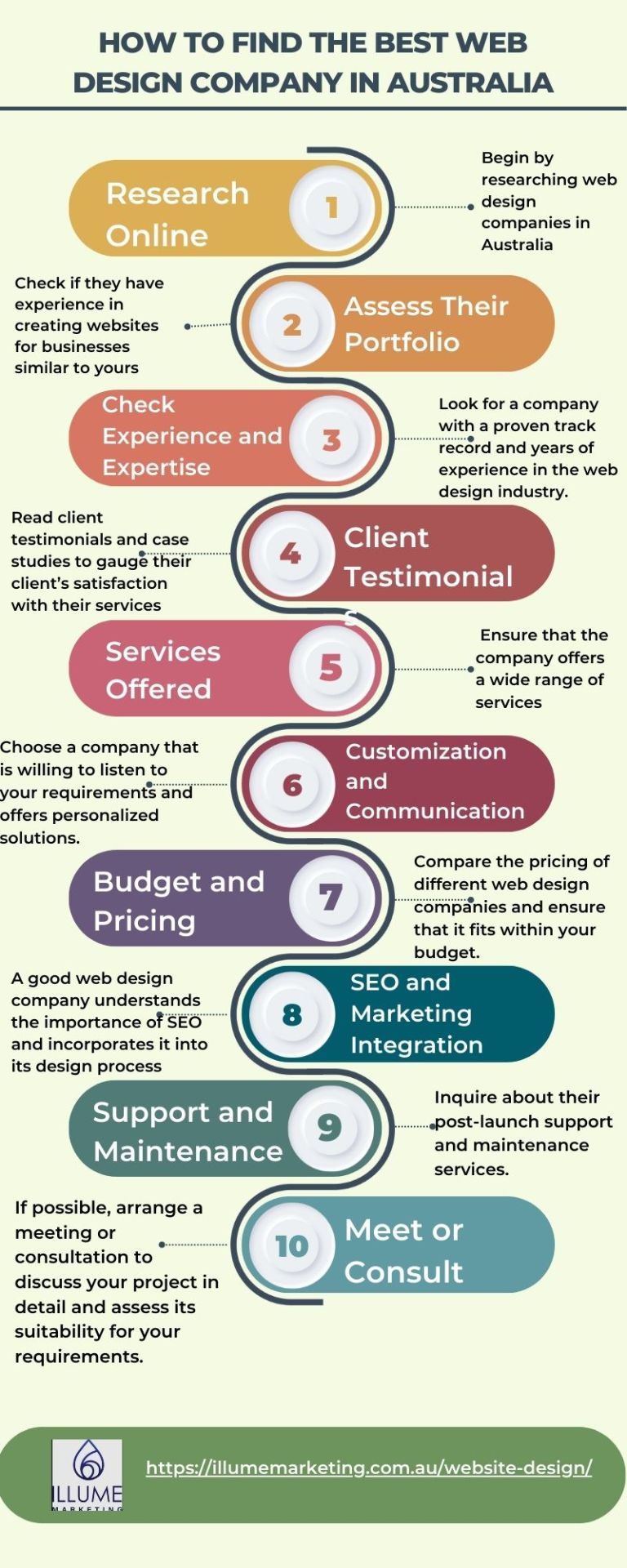
#webdesign#webdevelopment#websitedesign#webdesignersdarwin#brisbanewebdesign#best web design company#best web design company in Australia
1 note
·
View note
Text

Many small business owners and creatives believe that a visually stunning website is enough to attract customers and rank high on Google. A sleek, professional website may impress your visitors — but if no one can find it online, it’s not helping your business grow. Search engines don’t rank websites based on appearance — they rank them based on relevance, performance, and structure.
So yes — your website can be visually stunning and still fail at SEO.
Let’s break down why great-looking websites still fail at SEO and how you can avoid it.
#webdesignersdarwin#webdevelopment#websitedesigndarwin#darwinwebdesign#darwinwebdevelopment#webdesignersaustralia#websitedesignaustralia#best web design company in australia#websitedesign#websitedesignerdarwin#SEO Darwin#seo agency
0 notes
Text

In the rapidly evolving field of digital marketing,It is crucial to keep ahead of the curve. As artificial intelligence (AI) and machine learning reshape how people search for information online, a new concept has emerged: Generative Engine Optimisation (GEO). This innovative approach is transforming the way businesses establish their online presence, ensuring they remain competitive in an AI-driven search landscape.
#webdesignersdarwin#webdevelopment#websitedesigndarwin#darwinwebdesign#webdesignersaustralia#darwinwebdevelopment#websitedesignaustralia#websitedesignerdarwin#best web design company in australia#websitedesign
0 notes
Text
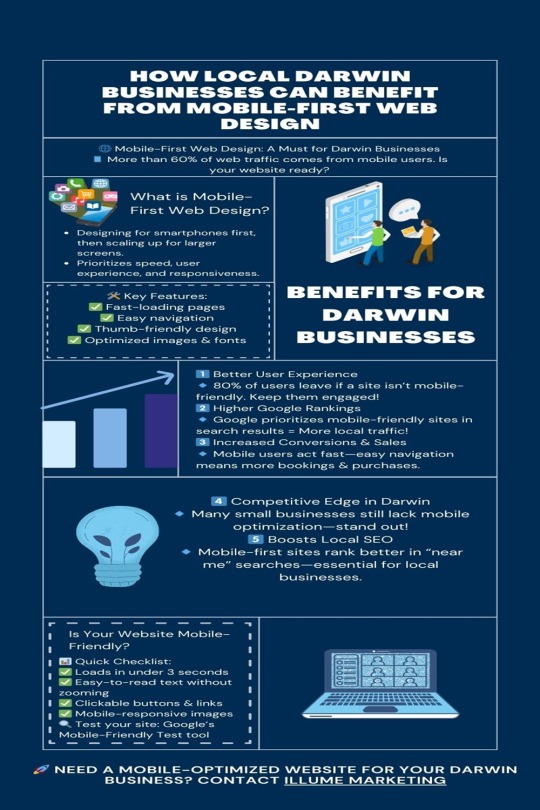
The way people interact with websites has changed dramatically. Mobile devices now account for more than half of all internet traffic, making mobile-first web design a priority for businesses — especially those in Darwin, where a diverse population and a growing digital presence mean new opportunities for local enterprises.
#webdesignersdarwin#webdevelopment#websitedesigndarwin#webdesignersaustralia#darwinwebdesign#darwinwebdevelopment#websitedesignaustralia#website development Darwin#Darwinwebsitedevelopment#responsivedesign
0 notes
Text
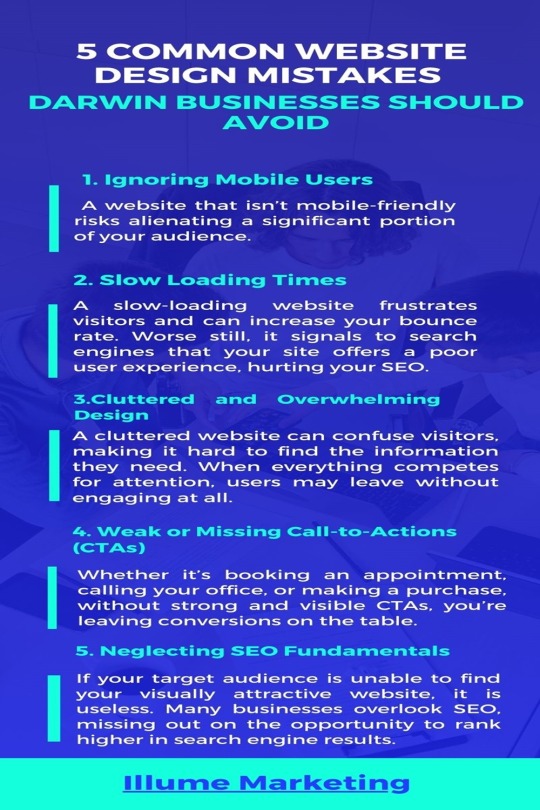
In Darwin's competitive business landscape, your website serves as a virtual storefront. It’s where potential customers form their first impressions, decide whether to engage with your services, or simply move on to a competitor. Despite its importance, many businesses unknowingly make website design mistakes that can cost them leads and sales. Let’s dive into the five most common pitfalls and how to avoid them, ensuring your website works as hard as you do.
#webdesignersdarwin#webdevelopment#websitedesigndarwin#darwinwebdesign#webdesignersaustralia#darwinwebdevelopment#websitedesignaustralia
0 notes
Text
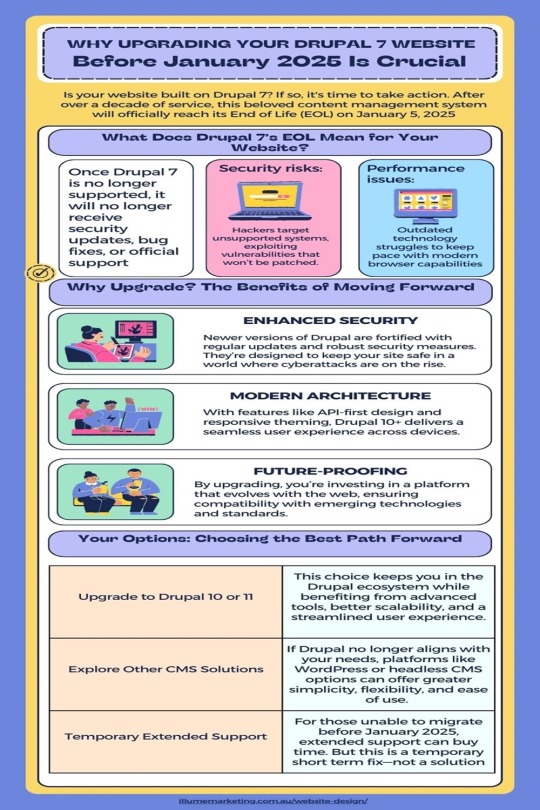
Is your website built on Drupal 7? If so, it's time to take action. After over a decade of service, this beloved content management system will officially reach its End of Life (EOL) on January 5, 2025
While it’s hard to say goodbye to a reliable platform, the impending deadline offers an opportunity to embrace the future of web technology. If your website still relies on Drupal 7, here’s why upgrading is no longer optional—and how taking action can set you up for success.
https://illumemarketing.com.au/website-design/
#webdesignersdarwin#webdevelopment#darwinwebdesign#websitedesigndarwin#darwinwebdevelopment#webdesignersaustralia
0 notes
Text
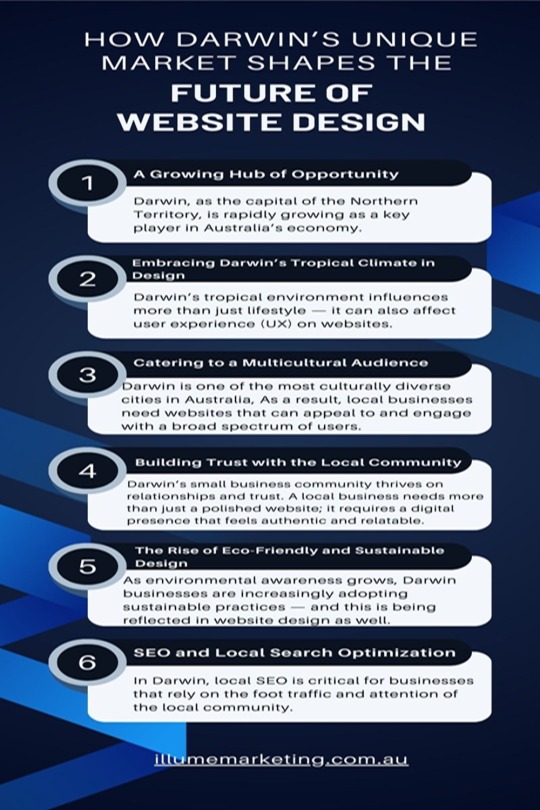
In today’s digital age, having an effective online presence is crucial for any business, but when you’re operating in a region as distinct as Darwin, the stakes are even higher. Darwin’s market, shaped by its geographical location, diverse population, and close-knit community, requires a website design approach that is uniquely tailored to meet its specific needs. In this blog, we’ll explore how Darwin’s unique market influences website design trends and the future of digital business in this region.
#webdesignersdarwin#webdevelopment#websitedesigndarwin#darwinwebdesign#webdesignersaustralia#darwinwebdevelopment#websitedesignerDarwin
0 notes
Text
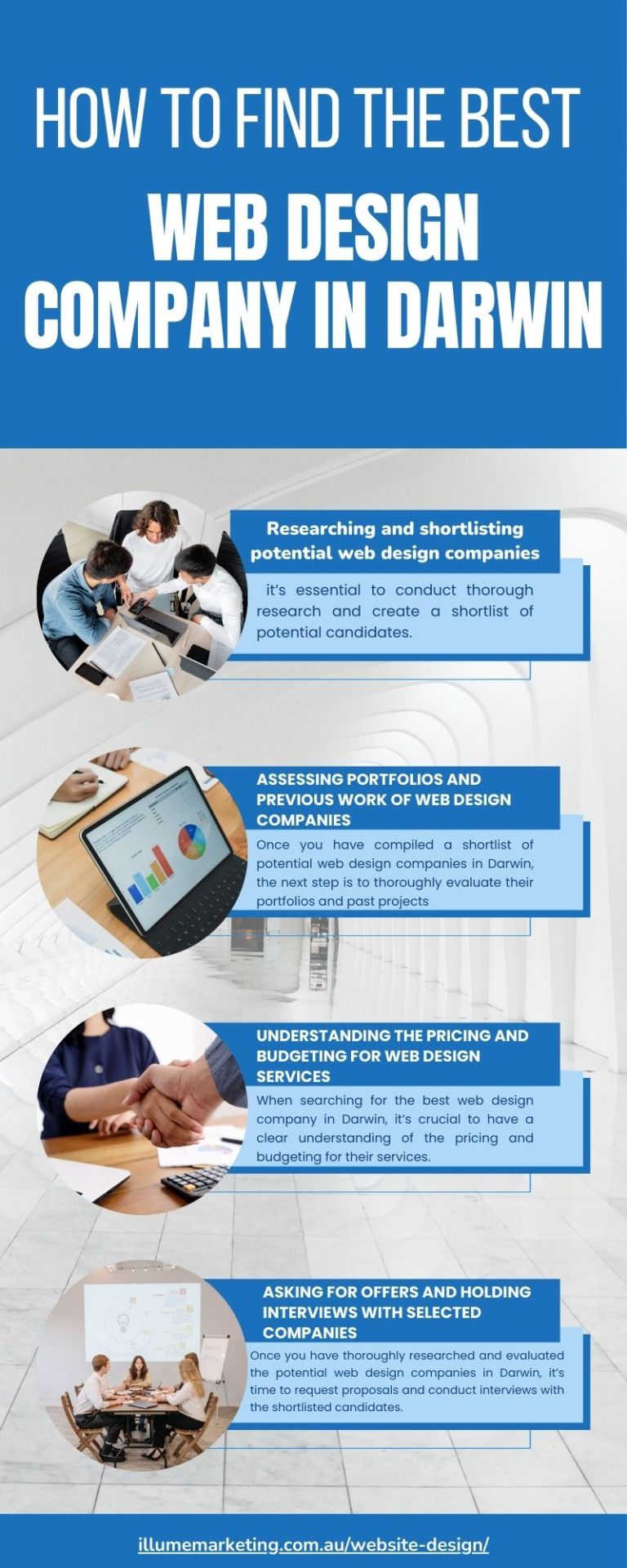
The importance of picking a trustworthy web design company
A well-designed website is crucial for the success of any business, especially in today’s digital landscape. Your website serves as the digital face of your company, and it plays a vital role in attracting potential customers, building brand credibility, and driving conversions. When it comes to creating an impactful online presence, the choice of web design company can make all the difference.
Selecting the right web design company in Darwin can be a game-changer for your business. A skilled and experienced web design team can transform your vision into a stunning, user-friendly, and high-performing website that aligns with your brand identity and marketing goals.
By investing in a reputable web design company, you can ensure that your website is not only visually appealing but also optimized for search engines, mobile responsiveness, and overall functionality. Your internet presence, client trust, and eventually business success can all be boosted by a well-designed website. Therefore, it is crucial to take the time to research and find the best web design company in Darwin that can bring your digital aspirations to life.
#webdesignersdarwin#webdevelopment#websitedesigndarwin#webdesignersaustralia#darwinwebdevelopment#darwinwebdesign
0 notes
Text
6 Reasons Why Elementor is a Game-Changer for Website Design
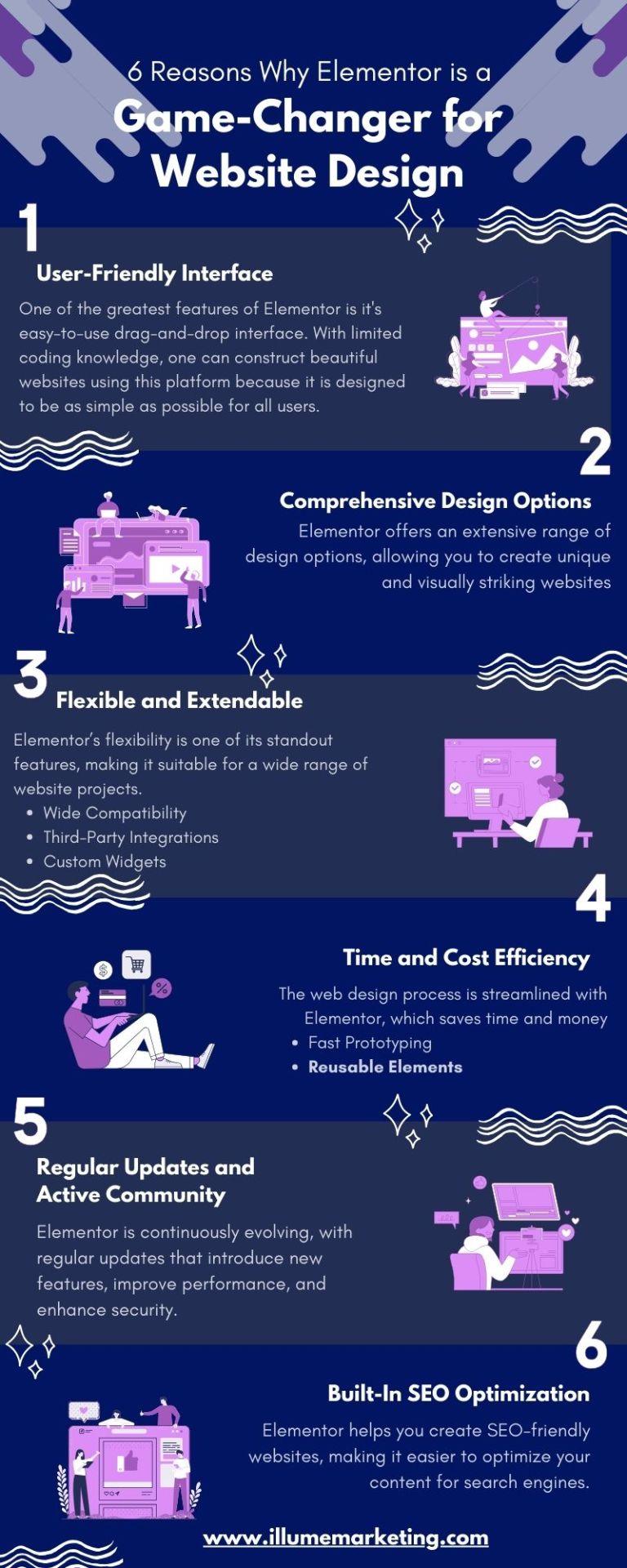
In the world of web design, finding the right tools to create visually appealing, functional, and user-friendly websites is crucial. Elementor, a popular WordPress page builder, has gained widespread acclaim for its ability to simplify the web design process while offering powerful customization options. Elementor offers an adaptable and user-friendly platform to help you realise your artistic ideas regardless of your experience. Here are 6 reasons why Elementor is a game changer for website design.
#webdesignersdarwin#webdevelopment#websitedesigndarwin#webdesignersaustralia#darwinwebdesign#Darwinwebdevelopment#websitedevelopmentDarwin
0 notes
Text
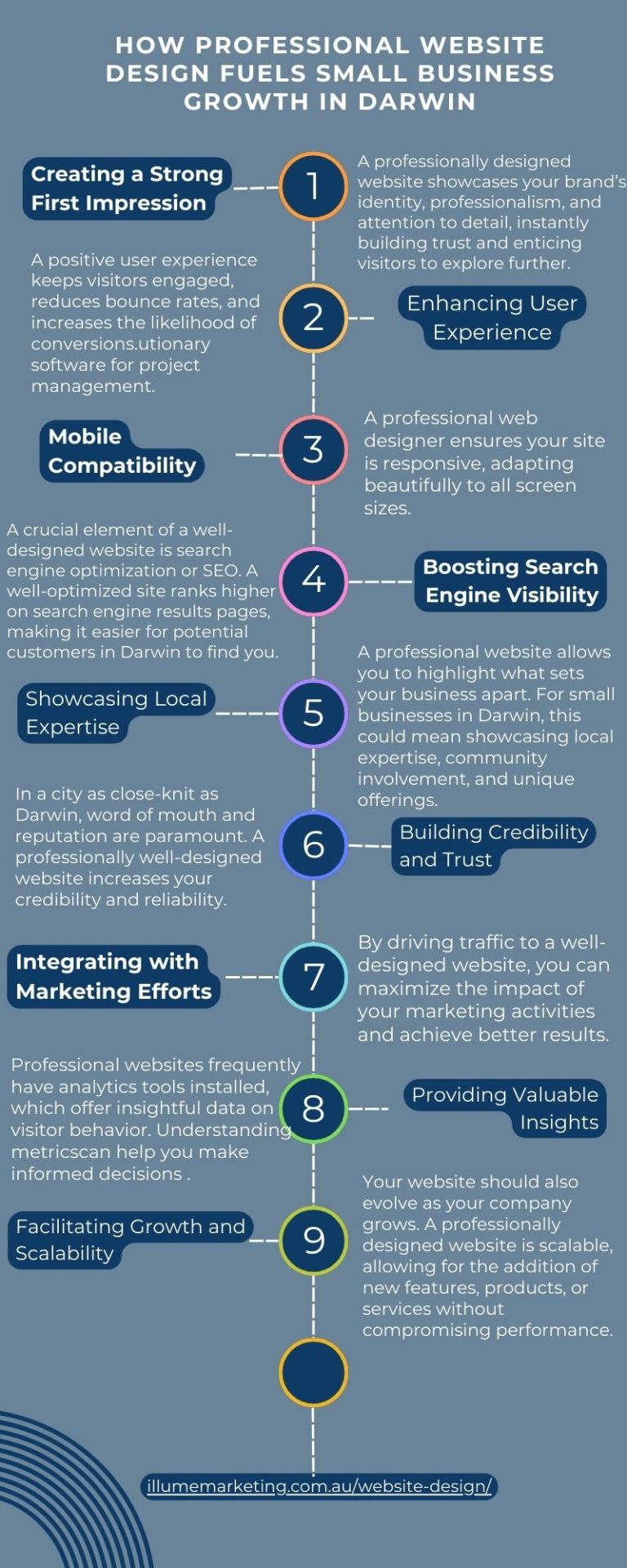
In the heart of Australia’s Northern Territory, Darwin stands as a vibrant hub of culture, commerce, and opportunity. For small businesses in this dynamic city, establishing a strong online presence is crucial. A professional website design can be a powerful catalyst for growth, providing a platform to reach a broader audience, build credibility, and compete effectively in the digital age. Here’s how professional website design can help small businesses in Darwin thrive.
0 notes
Text
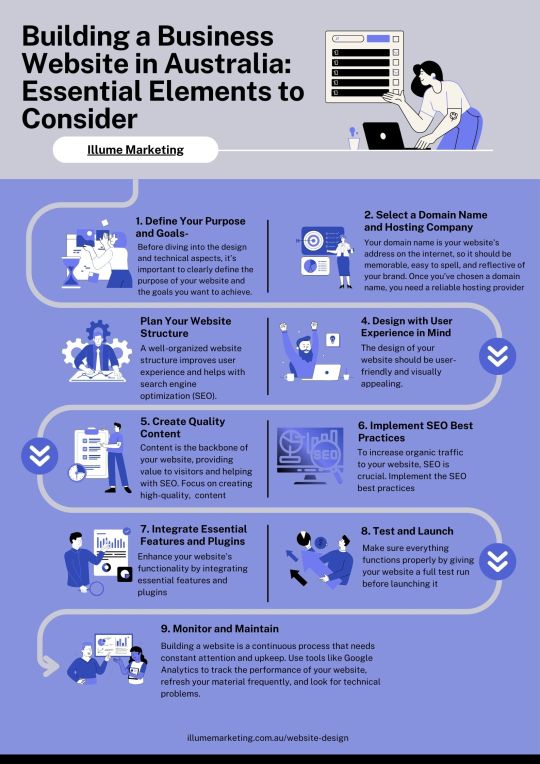
In today’s digital age, having a professional website is crucial for any business looking to establish an online presence, attract customers, and drive growth in Australia. Creating a website may seem like a daunting task, but breaking it down into essential elements can simplify the process. Whether you’re starting from scratch or revamping an existing site, here’s a comprehensive guide on how to create an effective website for your business in Australia.
0 notes
Text
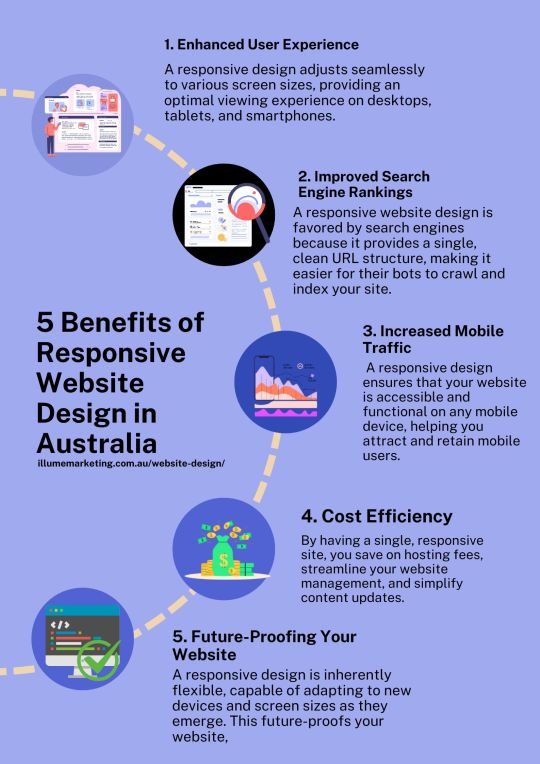
In today’s digital landscape, having a responsive website design is essential for any business looking to succeed online. With Australia’s high internet penetration and increasing mobile usage, a responsive design ensures your website performs well across all devices, enhancing user experience and boosting your online presence. Here are five key benefits of adopting a responsive website design in Australia.
#webdesignersdarwin#webdevelopment#darwinwebdesign#websitedesigndarwin#webdesignersaustralia#Darwinwebdevlopment#websitedesignaustralia
0 notes
Text
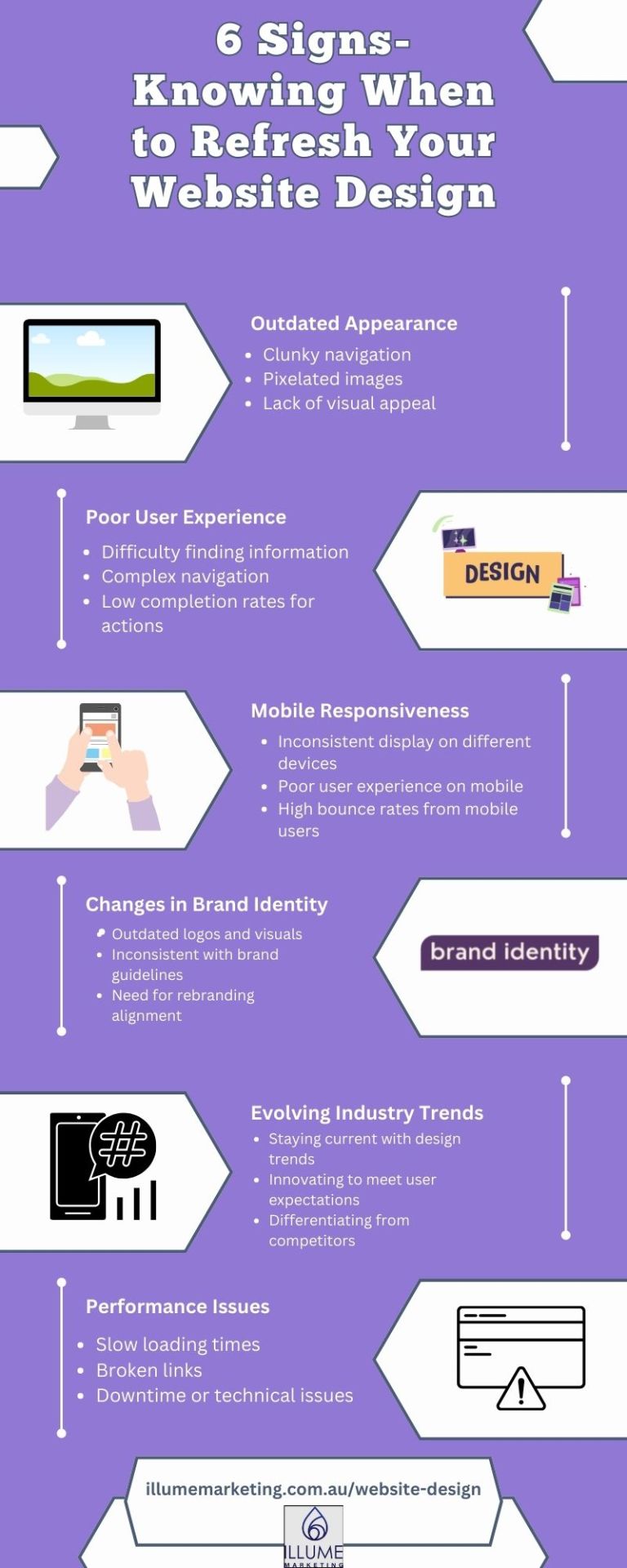
Your website acts as the digital face of your company in the fast-paced world of today. It’s often the first point of contact for potential customers, making a lasting impression and influencing their decision to engage with your brand. However, as technology and design trends evolve, so should your website. Knowing when to update your website design Darwin is crucial for staying relevant, maintaining user engagement, and driving business growth.
0 notes
Text
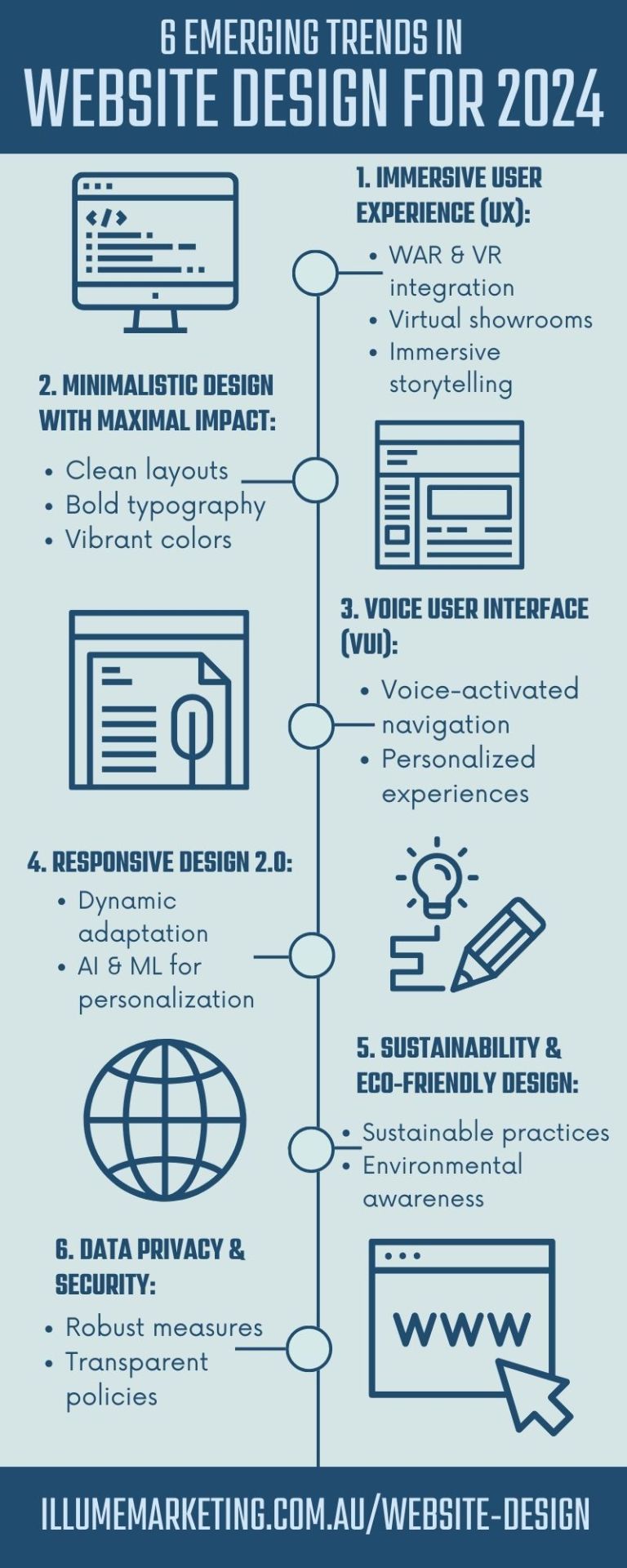
In the fast-paced realm of digital innovation, website design is continually evolving to meet the ever-changing needs and preferences of users. As we stride into 2024, the horizon of website design unfolds with exciting trends that promise to redefine user experiences and shape the digital landscape. Let's delve into the captivating trends that are set to dominate the web design sphere this year.
Immersive User Experience (UX): Gone are the days of static web pages. In 2024, websites are becoming immersive environments that engage users on multiple sensory levels. Augmented Reality (AR) and Virtual Reality (VR) technologies are seamlessly integrated into web design, offering users an interactive and captivating journey. From virtual showrooms for e-commerce to immersive storytelling experiences for content-based sites, the possibilities are boundless.
Minimalistic Design with Maximal Impact: In the cluttered digital space, simplicity reigns supreme. Minimalistic design principles continue to gain traction, focusing on clean layouts, ample white space, and intuitive navigation. However, what sets 2024 apart is the incorporation of bold typography, vibrant colors, and micro-interactions to add personality and depth to minimalist designs, creating visually stunning yet highly functional websites.
Voice User Interface (VUI): With the proliferation of smart devices and virtual assistants, voice search and commands are becoming increasingly prevalent. Website design in 2024 embraces VUI, optimizing sites for voice interaction to enhance accessibility and user convenience. From voice-activated navigation to personalized voice-guided experiences, websites are adapting to cater to the growing reliance on voice technology.
Responsive Design 2.0: Responsive design has been a staple in web development for years, but in 2024, it undergoes a transformative evolution. Websites are not only responsive across various devices but also dynamically adapt to individual user preferences and contexts. Utilizing Artificial Intelligence (AI) and Machine Learning (ML) algorithms, websites tailor content, layout, and functionality in real-time, delivering hyper-personalized experiences that resonate with each user.
Sustainability and Eco-Friendly Design: As environmental consciousness continues to rise, website designers are embracing sustainability as a core principle. In 2024, eco-friendly design practices such as energy-efficient hosting, lightweight coding, and carbon-neutral operations are integrated into website development. Additionally, websites are leveraging their platforms to promote environmental awareness and activism, aligning with the values of eco-conscious consumers.
Data Privacy and Security: With increasing concerns over data privacy and cybersecurity, website design in 2024 prioritizes robust security measures and transparent data handling practices. From end-to-end encryption to compliance with stringent privacy regulations, websites instill trust and confidence in users by safeguarding their personal information. Transparent data policies and user-centric privacy controls empower individuals to exercise control over their online data, fostering a relationship of trust between users and websites.
In conclusion, 2024 heralds a new era of website design marked by innovation, interactivity, and user-centricity. As technology continues to evolve, website designers must stay abreast of emerging trends and adapt their strategies to meet the evolving needs and expectations of users. By embracing these trends, businesses and creators can carve out a distinct digital presence and deliver unforgettable experiences in the dynamic landscape of the internet.
#webdesignersdarwin#webdevelopment#websitedesigndarwin#darwinwebdesign#webdesignersaustralia#Darwinwebdevelopment
0 notes
Text
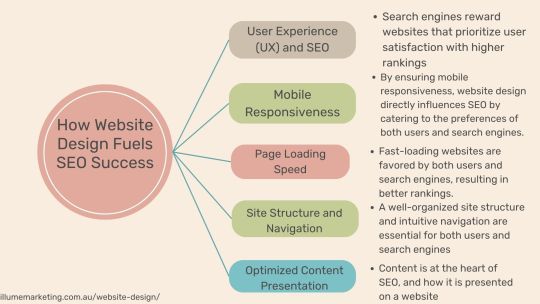
1. User Experience (UX) and SEO: User experience is a critical factor that search engines like Google consider in their ranking algorithms. A well-designed website ensures seamless navigation, fast loading speed, and intuitive interface, leading to a positive user experience. Factors such as mobile responsiveness, easy-to-read content, clear call-to-action buttons, and logical site structure contribute to improved UX. Search engines reward websites that prioritize user satisfaction with higher rankings, thereby highlighting the significance of website design in SEO.
2. Mobile Responsiveness: With the exponential rise in mobile device usage, search engines have shifted towards mobile-first indexing. This means that Google predominantly uses the mobile version of a website’s content for indexing and ranking. Websites with responsive design adapt seamlessly to various screen sizes and devices, providing users with a consistent experience across desktops, tablets, and smartphones. By ensuring mobile responsiveness, website design directly influences SEO by catering to the preferences of both users and search engines.
3. Page Loading Speed: Page loading speed is another crucial aspect of website design that significantly impacts SEO. Slow-loading websites frustrate users and lead to higher bounce rates, signaling poor user experience to search engines. On the other hand, fast-loading websites are favored by both users and search engines, resulting in better rankings. Website design plays a vital role in optimizing page speed by minimizing unnecessary elements, leveraging browser caching, and compressing images without compromising on quality.
4. Site Structure and Navigation: A well-organized site structure and intuitive navigation are essential for both users and search engines to explore and understand the content of a website. Website design influences the layout, hierarchy, and linking structure, making it easier for search engine crawlers to index pages effectively. By incorporating clear navigation menus, breadcrumbs, and internal linking, website design enhances the discoverability of content, leading to better SEO performance.
5. Optimized Content Presentation: Content is at the heart of SEO, and how it is presented on a website can significantly impact its visibility. Effective website design ensures that content is structured in a visually appealing manner, with proper use of headings, bullet points, and multimedia elements. By making content scannable and engaging, website design encourages users to spend more time on the site, reducing bounce rates and signaling relevance to search engines.
Conclusion: In conclusion, website design and SEO are intrinsically linked, with each complementing the other to achieve optimal results. A well-designed website not only enhances user experience but also lays a solid foundation for effective SEO strategies. By focusing on elements such as mobile responsiveness, page loading speed, site structure, navigation, and content presentation, businesses can create a compelling online presence that resonates with both users and search engines. Ultimately, investing in website design is not just about aesthetics; it’s a strategic move to boost SEO performance and drive organic traffic to your site.
About us — Illume Marketing specializes in providing comprehensive solutions to meet your business’s web design needs. We go beyond traditional web design services. By combining strategic thinking, creativity, and a commitment to client success, we provide holistic solutions that elevate your online presence and contribute to the growth and success of your business.
For more information visit our website — illumemarketing.com.au
0 notes
Text
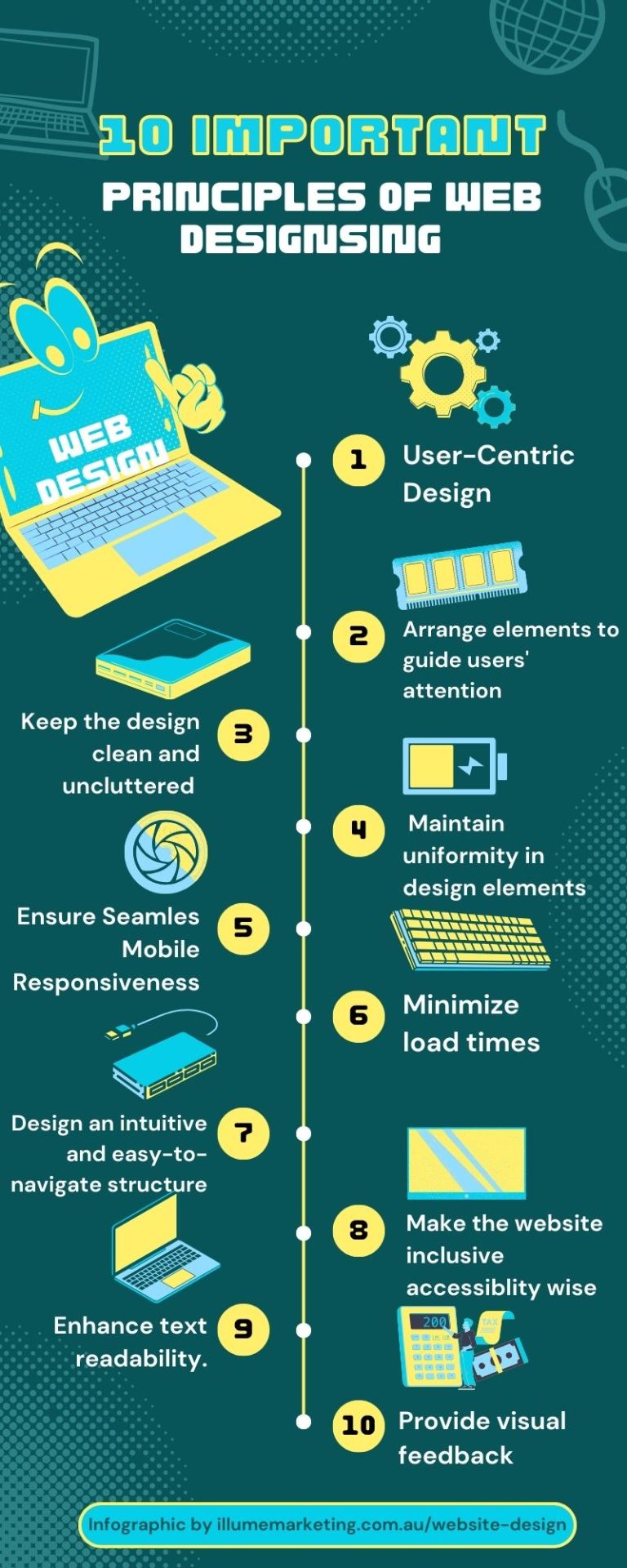
In the dynamic world of the internet, where first impressions matter and user experience reigns supreme, mastering the principles of web design is essential for creating a successful online presence. Whether you’re a seasoned web designer or just starting, understanding and applying these key principles will guide you towards crafting visually appealing, user-friendly, and effective websites.
1. User-Centric Design: Putting the user first is paramount. Understanding your target audience, their needs, and behaviors is the foundation of effective web design. Create a seamless and enjoyable experience by anticipating user interactions and preferences.
2. Visual Hierarchy: Create a clear visual hierarchy to help visitors navigate your information. Use contrasting colors, font sizes, and spacing to emphasize important elements and lead the eye from one section to another.
3. Simplicity Rules: “Simplicity is the ultimate sophistication.” — Leonardo da Vinci. A clutter-free design not only looks more appealing but also enhances usability. Strive for simplicity in layout, navigation, and content presentation to avoid overwhelming your audience.
4. Consistency is Key: Consistency breeds familiarity, and familiarity builds trust. Maintain uniformity in design elements such as color schemes, fonts, and button styles throughout your website. This coherence reinforces your brand identity and makes navigation more intuitive.
5. Mobile Responsiveness: In the era of smartphones and tablets, a mobile-friendly design is non-negotiable. Make sure that your website works properly across a range of screens and devices. Responsive design not only caters to a broader audience but also positively impacts search engine rankings.
6. Loading Speed Matters: Users are impatient. Websites that load slowly may have significant bounce rates. Optimize your images, minimize HTTP requests, and leverage browser caching to ensure swift loading times. A user-friendly website loads quickly.
7. Navigation Clarity: User-friendly navigation is the backbone of a good website. Design an intuitive navigation structure, with clear menus and calls to action. Users should effortlessly find what they’re looking for without getting lost in a maze of pages.
8. Accessibility for All: Design with inclusivity in mind. Make sure people with disabilities can access your website. This includes providing alternative text for images, using descriptive link text, and ensuring compatibility with screen readers.
9. Readability and Legibility: Choose fonts and font sizes carefully to enhance readability. Legibility is ensured by high contrast between the text and the background.. Pay attention to line spacing and paragraph structure to make reading a pleasant experience.
10. Feedback and Interactivity: Engage your audience with interactive elements and provide feedback for user actions. Visual cues, hover effects, and subtle animations can make the browsing experience more dynamic and enjoyable.
In conclusion, the principles of web design are a powerful toolkit for creating websites that not only look great but also deliver exceptional user experiences. By combining these principles with your creativity and technical skills, you’ll be well on your way to crafting websites that leave a lasting impression in the vast landscape of the internet. Keep evolving with the industry, stay user-focused, and let these principles be your guide to web design mastery.
0 notes